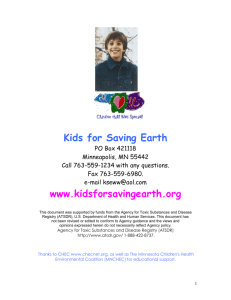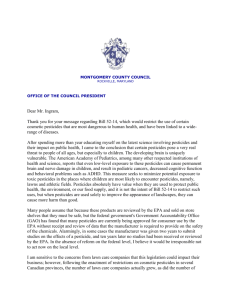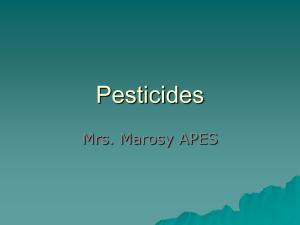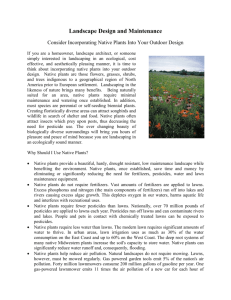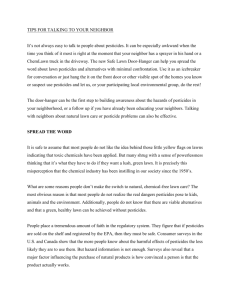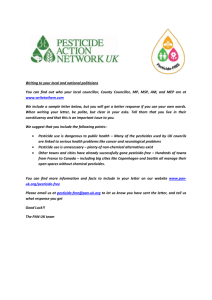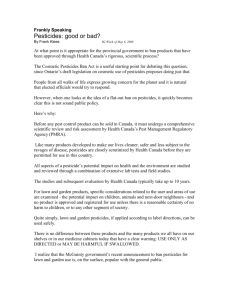SAMPLE LETTER
advertisement
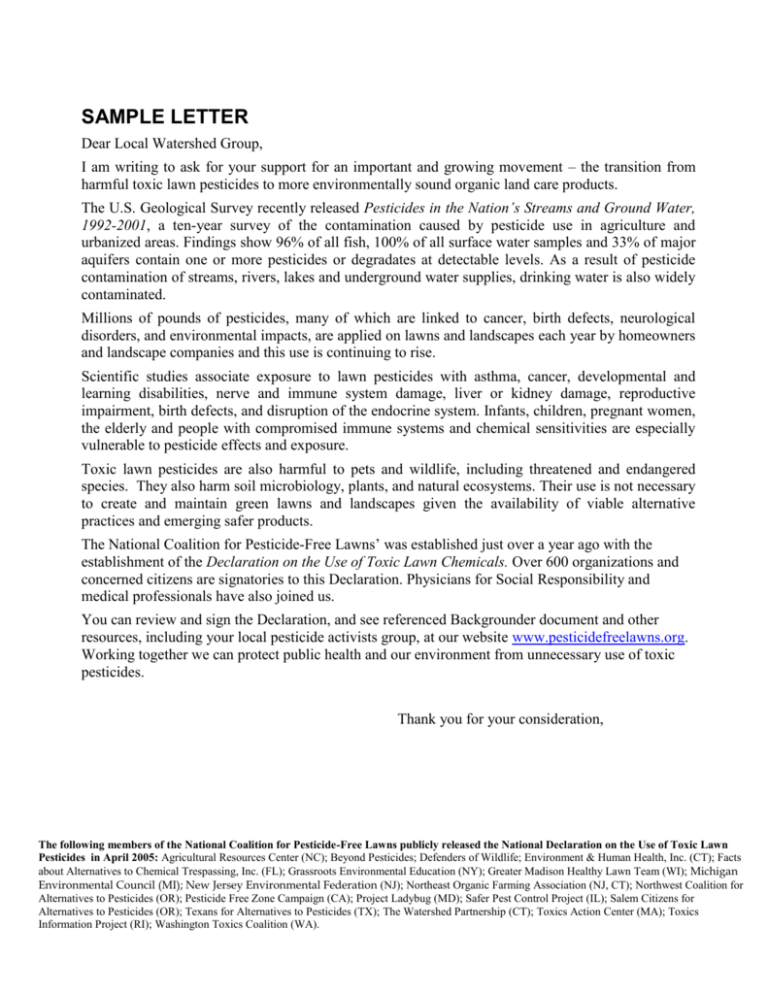
SAMPLE LETTER Dear Local Watershed Group, I am writing to ask for your support for an important and growing movement – the transition from harmful toxic lawn pesticides to more environmentally sound organic land care products. The U.S. Geological Survey recently released Pesticides in the Nation’s Streams and Ground Water, 1992-2001, a ten-year survey of the contamination caused by pesticide use in agriculture and urbanized areas. Findings show 96% of all fish, 100% of all surface water samples and 33% of major aquifers contain one or more pesticides or degradates at detectable levels. As a result of pesticide contamination of streams, rivers, lakes and underground water supplies, drinking water is also widely contaminated. Millions of pounds of pesticides, many of which are linked to cancer, birth defects, neurological disorders, and environmental impacts, are applied on lawns and landscapes each year by homeowners and landscape companies and this use is continuing to rise. Scientific studies associate exposure to lawn pesticides with asthma, cancer, developmental and learning disabilities, nerve and immune system damage, liver or kidney damage, reproductive impairment, birth defects, and disruption of the endocrine system. Infants, children, pregnant women, the elderly and people with compromised immune systems and chemical sensitivities are especially vulnerable to pesticide effects and exposure. Toxic lawn pesticides are also harmful to pets and wildlife, including threatened and endangered species. They also harm soil microbiology, plants, and natural ecosystems. Their use is not necessary to create and maintain green lawns and landscapes given the availability of viable alternative practices and emerging safer products. The National Coalition for Pesticide-Free Lawns’ was established just over a year ago with the establishment of the Declaration on the Use of Toxic Lawn Chemicals. Over 600 organizations and concerned citizens are signatories to this Declaration. Physicians for Social Responsibility and medical professionals have also joined us. You can review and sign the Declaration, and see referenced Backgrounder document and other resources, including your local pesticide activists group, at our website www.pesticidefreelawns.org. Working together we can protect public health and our environment from unnecessary use of toxic pesticides. Thank you for your consideration, The following members of the National Coalition for Pesticide-Free Lawns publicly released the National Declaration on the Use of Toxic Lawn Pesticides in April 2005: Agricultural Resources Center (NC); Beyond Pesticides; Defenders of Wildlife; Environment & Human Health, Inc. (CT); Facts about Alternatives to Chemical Trespassing, Inc. (FL); Grassroots Environmental Education (NY); Greater Madison Healthy Lawn Team (WI); Michigan Environmental Council (MI); New Jersey Environmental Federation (NJ); Northeast Organic Farming Association (NJ, CT); Northwest Coalition for Alternatives to Pesticides (OR); Pesticide Free Zone Campaign (CA); Project Ladybug (MD); Safer Pest Control Project (IL); Salem Citizens for Alternatives to Pesticides (OR); Texans for Alternatives to Pesticides (TX); The Watershed Partnership (CT); Toxics Action Center (MA); Toxics Information Project (RI); Washington Toxics Coalition (WA).


